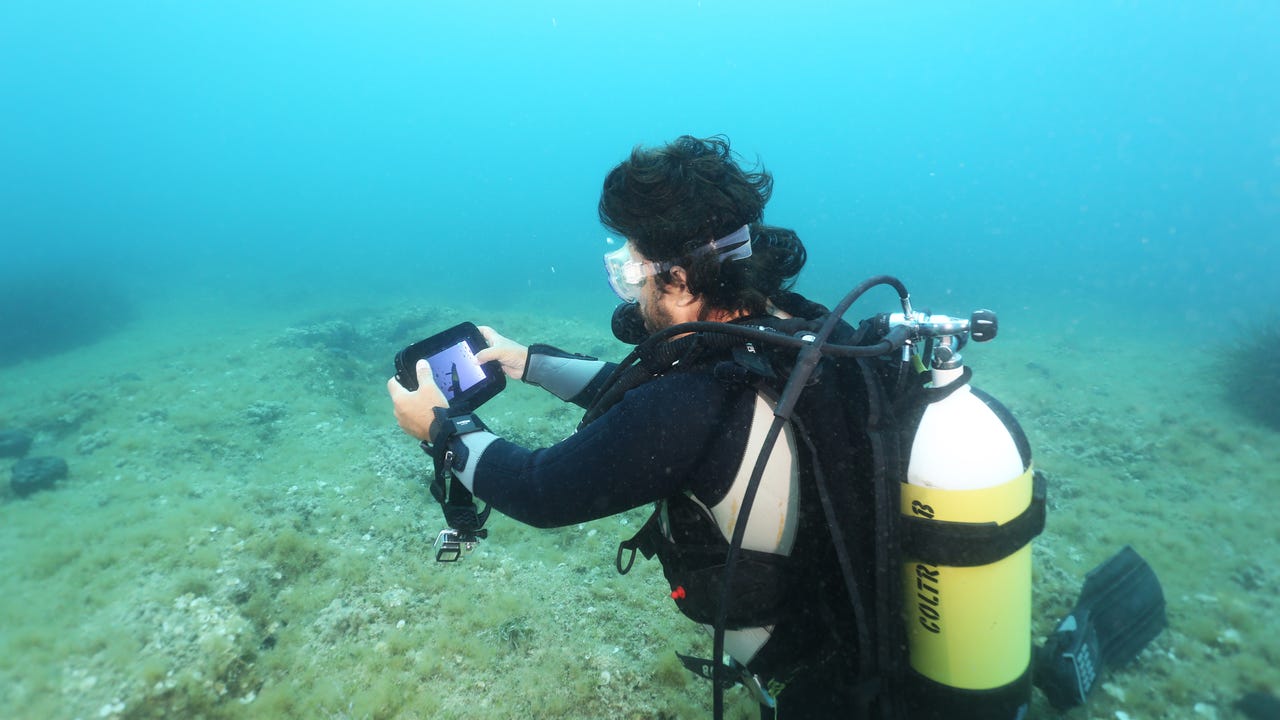The Internet of Underwater Things: How researchers are mimicking whales to network the seas


While these are fascinating projects, a consortium of mostly European partners is trying to achieve something even more ambitious: building an Internet of Underwater Things. The goal: turning seas, lakes, and rivers into digital highways travelled by unmanned submarine vehicles that transmit data to a central control center - and to each other.
The EU is supporting the effort, named project Sunrise, with a €4m budget as part of its Seventh Framework Programme. The research, led and coordinated by the University of La Sapienza in Rome, started in 2013 and will run until next year.
With oceans and lakes covering 71 percent of the earth's surface, it seems like a no-brainer to try and digitally connect this huge territory. However, there are more than a few reasons why no one has tried to do it so far.
The first is that you can't transmit signals undersea as effectively as can through the air. "Radio waves don't travel far underwater, just a few meters at most, so we can't rely on the communication protocols we use to connect our smartphone and tablets in our daily life," La Sapienza's project leader Chiara Petrioli told ZDNet.
The best solution? Mimicking the way animals like whales or dolphins communicate, and transmitting data and information though sound waves that can travel for kilometers. It's a brilliant solution that seems obvious in retrospect, but it's more difficult to implement than you might imagine.
"Setting up the Internet of Underwater Things means having to overcome several problems: from minimizing the costs of sensors and submarine AUVs [autonoumous underwater vehicles] which need to be reliable and durable in a challenging environment, to building a system for monitoring the communication between several nodes and sensors," Petrioli says.
Using sound as a communication channel also means having to deal with several physical constraints. In the water, only very low data rates are achievable - only one third of the 56Kbps from the dark days of dial-up. Propagation delay is also an issue: underwater sounds propagate five orders of magnitude slower than radio waves on earth.
"Other factors can have an impact on the ability to communicate: from salinity to the temperature of the water, to the wind rippling the surface of the water," the La Sapienza professor added. The noise coming from human activities, like passing ships or offshore drilling, could also negatively impact the transmission.
All of the above means it's very hard to make sure that a signal sent from point A (say, an AUV) travels smoothly and efficiently to point B. What the Sunrise team is designing, therefore, is a system made up of a network of submarine nodes that are able to understand, whatever the circumstances, which is the best path to send the data through and which is the best technology to be used in a specific situation.
"For instance, in some cases the best option could be using optical signals, the range of which is limited: just for a few tens of meters, but that can achieve, according to some preliminary studies we have seen, speeds up to 10Mbps," Petrioli says. So, in the mid-term, one scenario researchers envision is using optical signals for short-range data packets, and sound as a backbone for long-range ones.
For now, though, they are focusing mainly on developing a software architecture that could allow the communication between a network of heterogeneous underwater assets and which ensures interoperability between a number of different protocols and of different devices.
The acoustic modems used in the experiments are being developed by a German SME called Evologic, while the Interuniversity Center of Integrated Systems for the Marine Environment (ISME) of Genoa, and the Scuola Superiore Sant'Anna of Pisa are taking care of the optical devices.
Other partners in the Sunrise consortium include NATO's Centre for Maritime Research and Experimentation, Portugal's University of Porto, the Netherland's University of Twente, England's University of Southampton, and the USA's Research Foundation of State University of New York, plus a number of startups and SMEs from Greece, Turkey, Italy, and the UK.
The submarine drones used in the experiments so far have been equipped with several sensors that allow them to monitor the environmental conditions and carry modules for radio and satellites communications as well; they can also use sonars to spot sunken objects.
In one of the first tests, they were instrumental in rescuing a lost container in the port area of Porto. The possible future applications are almost limitless: from helping archaeologists discover ancient relics buried underwater, to monitoring the activity of submarine volcanoes, to searching for oil and gas reserves or patrolling the shallow coastal waters for national security reasons.
Of course, in different kind of waters - oceans, seas, or lakes - the optimal behavior of the connected devices could change in line with the different conditions. That's why one of the main outcomes of Sunrise - together with the software architecture that enables devices to communicate underwater - is the creation a federation of experimental facilities covering the diverse marine environments. The testing scenarios cover the Mediterranean, the Black Sea, the Atlantic, and some heterogeneous shallow waters.
Researchers can access the testbeds through the Sunrise Gate, a web tool developed by La Sapienza's spin-off Nexse. The tool allows them to perform their experiments remotely, without the need to travel to the location, controlling and dynamically adjusting the way the AUVs behave and communicate with each other. Communications are encrypted; security of the data sent is just as important underwater as it is on earth.
Read this